By Greg Zyla —
Televised collector car auctions
Q: Hi Greg, I enjoy your columns and watching the Barrett-Jackson and Mecum car auctions on television. In one of your past columns you mentioned that the prices paid on the TV auctions are sometimes higher than what the car might be worth in the many collector car price guides.
After watching these great car auction shows, I now more than ever see that when two or more bidders want a car badly, the final money paid is way over the reserve listed for the sale to go through.
Can you tell me more about what I’ll call a “bidding frenzy” between two or three bidders going after one of the high dollar cars, like an L-88 Corvette or that Harley Earl designed 1954 Olds Rocket 88?
Signed, James C., retired and happy in Rhode Island.
A: James, I had to cut your question down a bit but everything important is in here. Thanks for being a loyal reader of my work and I’ll explain more on the car auctions, which I enjoy, too.
As for bidders paying “too much” for a car based on current printed book values, I don’t want to give the impression that every top auction car goes for too much or fails to offer the winning bidder a poor return on investment.
Most important is the fact that a collector car is worth what the buyer and seller agree on, period. If a buyer feels the purchase takes care of whatever reason or need, he/she bought the car for, i.e. recapturing your youth, joy of collecting or plain love of the car, then so be it.
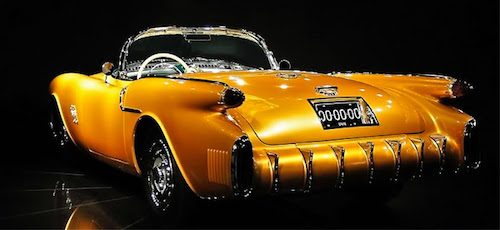
his Harley Earl 1954 Olds Rocket 88 concept car sold for a then record 3.24 million at the 2005 Scottsdale Barrett-Jackson auction. In 2024 dollars, this Olds would have crossed the block for $5,181,545. (Photo compliments of GM and Harley Earl family)
You mention the 1954 Olds Rocket 88, so I’ll use that as an example because the philosophy of “frenzy bidding” does not pertain to an extra special, one-of-a-kind car like Earl’s Olds sportscar prototype. This car is an absolute top dollar investment vehicle that sold for a then record $3.24 million back in 2005 at an Arizona Barrett-Jackson extravaganza.
Some felt it was too much while others felt the price was fair. Watching these one-of-a-kind vehicles cross the block is an exciting event for everyone, so when it comes to these pristine, rare, top-class vehicles, they can bring amazing amounts of money. These vehicles also can go up and down in value based on current financial and stock market volatility. (Now is a good example of the stock market moving up and down all over the place.)
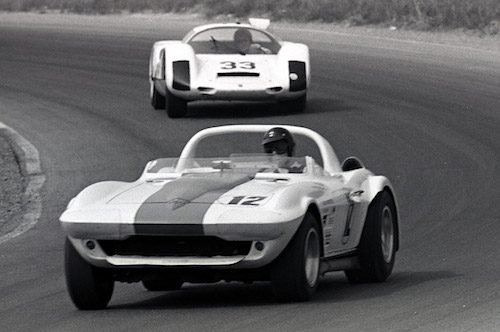
Here’s a Corvette Grand Sport in action in 1963, weighing in at just about 2,000 lbs. (Chevrolet Motor Division)
The L88 Corvette you mention is another special car, and because Chevrolet only made 216 of them from 1967 to 1969, whenever one appears at a Mecum or Barrett-Jackson show the viewers are in for a treat. Yes, the bidders are, too, and every time I’ve seen an L-88 go on the block there are several phone bidders involved from different countries around the globe.
So, just how special is an L-88 on the auction block you might ask?
How about $2.65 million at a recent Mecum auction while the highest ever paid being $3.85 million at a Barrett-Jackson event in 2014.
As for the “normal” top class cars we see go through the TV auctions like a 1969-1970 Ford Boss 429, of which less than 1,400 were ever built. I’ll agree in this case the winning bids might be higher than one would expect. Currently, the Boss 429 is listed in price guides for over $300,000 and thanks to the excitement of being on television, and being prodded by the auctioneer assistants, it’s an impressive and enjoyable thing to watch on TV. As for recent auction results, a 1969 Boss 429 fetched $420,000 at a Mecum Auction, well over the current $300,000 average value in a price guide.
Still, I can’t condemn in any way the prices paid, as the folks who appear on television sure seem to be having a wonderful time buying their dream cars. As for the price guides, they are just that – a guide and in no way the Bible on Collector Car prices.
This leads us to the average car collector hobbyist who might have three or four cars in his/her collection sitting in a garage behind his house. Most of these cars are far from the pristine condition of the vehicles that appear on the TV auction shows. However, thanks to watching Mecum or Barrett-Jackson, this “average Joe” collector car owner many times thinks his cars are worth way more than what they are.
On the reverse side of the coin, there are also some of these “regular cars” that really are worth more, so it’s a “do your homework before you buy or sell” scenario. If a car is good enough to get prime time on the auction shows, congrats to them!
I hope this helps explain things better, but the bottom line is Mecum and Barrett-Jackson shows have brought thousands of hours of very enjoyable TV viewing for us collector car fans, and I’m happy to be able to watch the “bidding action” on what seems like a weekly basis. Remember, too, that hundreds of cars in less pristine condition pass through these auctions, never appear on TV, and offer great buys for car lovers.
Thanks for the question, James.
Shelby Cobra and Corvette Grand Sport
Q: Greg, when the late Carroll Shelby introduced his first batch of Cobras to the American public, how many did he build through the last year of 1968? Also, please touch on the Corvette response to the Cobra if you will. Thanks much, Alan L., a car lover from near Pottsville, Pa.
A: Alan, I’d be happy to.
Specifically, Carroll Shelby’s passion to build the ultimate Ford sports car that would defeat the Zora Arkus-Duntov-built Corvettes started when he made a deal with A.C. Cars in England to secure bodies for his soon-to-be-born Ford Cobra. Here in the states, we didn’t know too much about these cars called the AC Ace.
Bristol Cars was its manufacturer headquartered in Bristol, England. The AC Ace two-seater sports car debuted in 1953 with a hand formed aluminum lightweight body and tube frame underpinnings that allowed it to dominate the E/Production class in SCCA road racing.
Al Isselhard, a reader from Wolcott, N.Y., and featured in my columns several times in the past, assisted in getting the story straight about the Shelby Cobra history. (You can read my column on Isselhard’s excellent info by searching “Shelby Cobra the real story Cape Cod Times”.)
Shelby’s initial Cobra came to life in 1962, where he dominated road racing by trouncing the previously dominating A/Production Corvettes.
Not to be outdone, Arkus-Duntov responded by building his Cobra “destroyer,” namely the 1963 Corvette Grand Sport. These Duntov creations featured a lightweight build powered by a small block V8 under the hood. Duntov built these highly sophisticated Grand Sports specifically to beat Shelby.
Shelby’s Cobra offered small block Fords in either 260 or 289 cubic inches with up to 306 horses. However, the rare 427-side oiler V8 listed at 425 horses put out closer to 475.
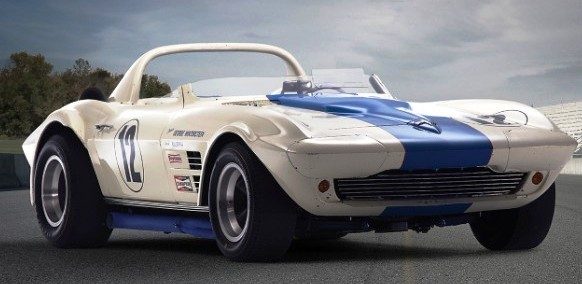
Enthusiasts have a chance to see an all-original 1963 Duntov-built 1963 Corvette Grand Sport roadster chassis No. 2. It’s on display at the Simeone Foundation Automotive Museum in Philadelphia. (Simeone Foundation Photo)
Duntov’s Grand Sport Corvette utilized a stroked 377-inch small block fed by four Weber side draft carbs developing 485 horses, more than enough to outpace the Shelby Cobras in the Governor’s race at Nassau in December of 1963.
To answer your question, only 654 small blocks and 350 or so big block Cobras were built in those seven years of availability, with many destined for street use. Today, if you see a real Shelby Cobra cross the auction block at Mecum or Barrett-Jackson, you’re talking big, big money for sure.
In contrast, only five of Duntov’s Grand Sports were ever built, two of them converted to roadsters. These cars are priceless, and word has it GM wanted the cars destroyed. Regardless of corporate edict, all five Grand Sports survived and exist in good hands today.
Further, since we’re talking Mecum and Barrett-Jackson auctions this week, Carrol Shelby’s personal 427 Cobra sold for $5.94 million at a Mecum Auction in January of 2021.
Corvette Grand Sport? None of the originals have been put up for bid, but replicas have gone through as high as $149,500 at a “Bring a Trailer” auction. However, the current estimated value is $8 million for a real Grand Sport like the one on display at the Simeone Foundation Automotive Museum in Philadelphia.
Thanks for your question.
(Greg Zyla is a syndicated auto columnist who welcomes reader interaction on collector cars, auto nostalgia or motorsports at extramile_2000@yahoo.com, or by snail mail to Greg at Roosevelt St., Sayre, Pa. 18840.)

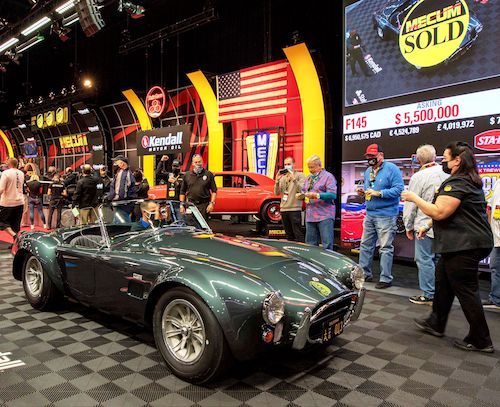
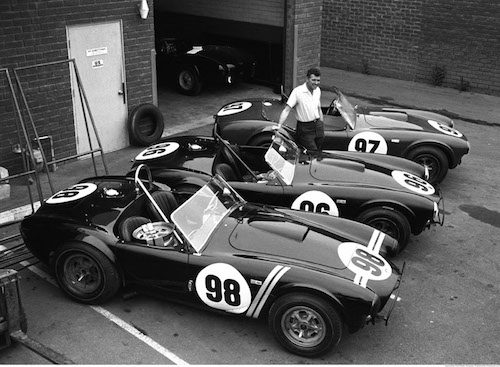

Be the first to comment on "Collector Car Corner / Cars We Remember; Cobras, Corvettes and televised auto auctions"